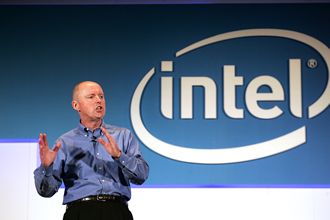 In one of those strange twists of fate that dog the semiconductor industry, it appears X86 giant Intel is now one of the biggest licensees of ARM tech on the planet, now it is a foundry business. ARM, of course, offers an advantage over X86 servers in terms of both functionality and heat. Intel is considerably boosting ARM revenues, according to well informed sources close to the facts.
In one of those strange twists of fate that dog the semiconductor industry, it appears X86 giant Intel is now one of the biggest licensees of ARM tech on the planet, now it is a foundry business. ARM, of course, offers an advantage over X86 servers in terms of both functionality and heat. Intel is considerably boosting ARM revenues, according to well informed sources close to the facts.
Actually, INTC has always had a lot of foundry business. It was forced by American authorities to guarantee that production of DEC’s Alpha microprocessor continued until the end of the decade, as we reported earlier at the INQster and the Rogister years back. Intel also had and probably still has a StrongARM licence – an opportunity Chipzilla signally missed back in the days.
It also still makes HP chips. Perhaps that is because of the peculiar nature of the partnership between Intel and HP.
Intel reacted very badly to the news.
Anna Cheng, the UK spinner for Intel, sent a snottogram to the Eyes saying that the world+dog knew it made ARM chips. She said that she objected to the fact that the Eyes blank carbon copied other people at Intel – including Chuck Mulloy – asking for clarification. She scolded the Eyes for not going through proper channels.
We responded by saying that we had in our possession many Intel “confidential” emails describing me – in no uncertain terms – as an old buffer.
ARM refused to comment, but it is quids in because of Intel’s decision to fab up the unique British designs…








